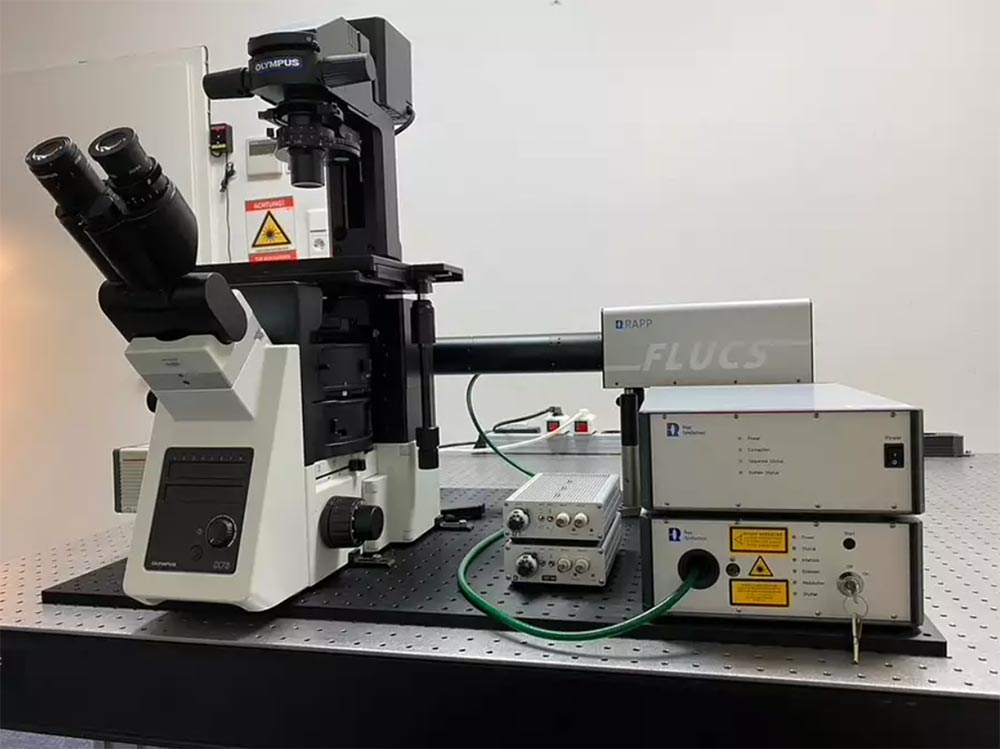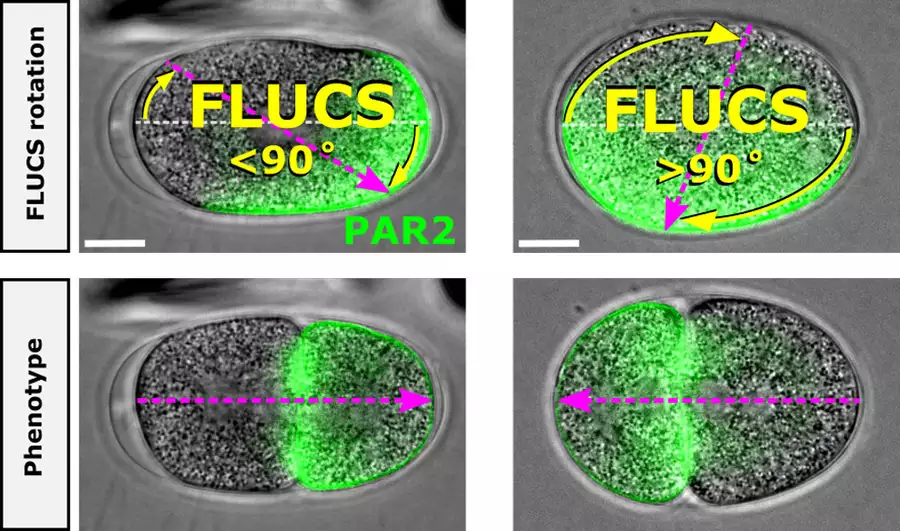
Cell Manipulation Technique Enters into Commercial Market
In cell biology and medical imaging, the targeted manipulation of cells under controlled conditions is a major challenge in understanding processes and causal relationships. Researchers are dependent on tools that enable them to manipulate individual components of a cell in order to explore their effects on intracellular mechanisms and interactions. However, a common problem with conventional methods of cell manipulation is that the sample is disturbed by the manipulation and the results are therefore compromised.
A laser technology developed by researchers at the Max Planck Institute of Molecular Cell Biology and Genetics makes it possible to influence and specifically control movements within living cells and embryos. The technology, called Focused Light-Induced Cytoplasmic Streaming (FLUCS), can be used to help better understand embryonic developmental disorders.
Further, the FLUCS method allows noninvasive manipulation of cells — for example, in developmental biology. As an additional module for high-resolution microscopes, FLUCS will improve cell biological and medical research, as well as open possibilities in microfluidics.
The technology has been licensed by Rapp OptoElectronic, a photomanipulation and illumination systems developer.

The FLUCS system allows noninvasive manipulation of cells for the first time. Courtesy of Rapp OptoElectronic.
FLUCS is a method of photomanipulation that makes it possible to specifically influence and control movements within cells and embryos with the help of laser beams. The beam selectively induces a thermal field in the cytoplasm, which locally changes the density and viscosity of the liquid medium and causes a flow due to the rapidly moving laser point. In contrast to conventional methods such as optical tweezers, the biomolecules floating in the cytoplasm are set in motion directly without the need for modification of the sample. They can still interact freely with their environment.
Using the method, researchers from Max Planck Institute generated controlled currents in living worm embryos and transported biomolecules to different parts of the growing embryo. Through targeted redistribution, they reported successful examination of the importance of the movement of the cytoplasm for the polarization of oocytes — and thus the question of which molecule has to go where exactly during development.
Based on successful joint development as well as the license agreement of the FLUCS technology from the Max Planck Institute to Rapp OptoElectronic, Rapp now offers FLUCS as a market-ready product to researchers and industrial users worldwide. A pilot system is located in the Light Microscope Facility of the Max Planck Institute of Molecular Cell Biology and Genetics in Dresden. Here, FLUCS is available to interested scientists from inside and outside the Max Planck Society for their research. The device is integrated as an add-on module to high-resolution microscopes via standard interfaces.

Optically controlled rotation of a worm embryo in its eggshell using FLUCS. Courtesy of MPI-CBG.
“FLUCS fills a gap in the previously available micro-manipulation techniques to study the causes and consequences of intracellular movement,” said Sven Warnck, managing director of Rapp OptoElectronic. “Directed liquid flows are induced by moderately warming up the sample with a laser spot. Their path can be easily specified individually using the user-friendly software, for example as a line, circle, or free form. In this way, cell components such as organelles, PAR proteins, and even chromatin can be moved freely in the cell nucleus without having to hold or fix them.”
The technology has a broad range of potential applications. In cell biology, artificially generated cytoplasmic currents can be used, for example, to invert PAR proteins and thus influence embryonic development. In medical research, molecular mechanisms and signaling pathways in cells can be better researched and the development of drugs can be supported. In microfluidics, the behavior of liquid quantities in the micro- or picoliter range can be examined in more detail with the help of FLUCS, thus supporting new methods of laboratory measurement technology, quality control, or food safety.
/Buyers_Guide/Rapp_OptoElectronic/c12554